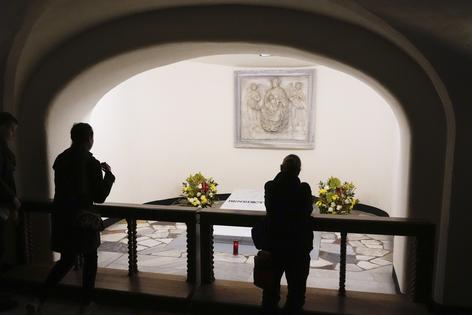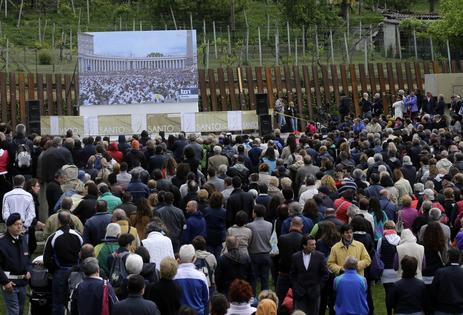Calls for Pope Benedict's sainthood make canonizing popes seem like the norm – but it's a long and politically fraught process
Published in News & Features
Like many others around the world, I watched the funeral of Pope Emeritus Benedict XVI live on the internet. Before the service began, an unexpected announcement came over the loudspeakers requesting that members of the assembled crowd refrain from raising any banners or flags. Nevertheless, toward the end of the liturgy, at least one large banner was displayed, reading “Santo Subito,” an Italian phrase that means “sainthood now.”
Identical signs were raised at the 2005 funeral of Pope John Paul II, who was officially canonized nine years later. The connection between these events has not gone unnoticed, leading some to raise questions about expectations that every future pope will be acclaimed as a saint.
As a specialist in Catholic liturgy and ritual, I know that in the contemporary church, no one, from popes to laypeople, is ever officially proclaimed a saint immediately after death. The way that saints are chosen has changed over the centuries, and that has affected the “wait time” between death and canonization.
In the early church, Christianity was illegal in the Roman Empire. Those who were executed after refusing to renounce their faith were venerated immediately after their deaths; individuals or small groups would pray at martyrs’ graves, believed to be places of special holiness, where heaven and earth meet.
Those who were imprisoned for their faith but released – called confessors — were venerated by their communities in the same way.
After the legalization of Christianity in the early fourth century, other men and women who had lived lives of exceptional virtue were also recognized as holy ones and called saints. For the next several centuries, most saints were venerated at the local level.
Bishops often approved many of these saints for wider regional veneration. Just before the year 1000, Ulrich of Augsburg, an ascetic German bishop, became the first saint to be officially canonized by a pope. By the early 12th century, it was left to the the popes to officially proclaim most saints. In later years, popes insisted on this exclusive prerogative.
Although the cases – called causes – of those already locally revered for their holiness were brought to Rome for examination and approval, there was no set timeline for the process. However, no highly regarded Christian was canonized immediately after death. Instead, the investigation of their cases could take years to reach a conclusion.
The proclamation of St. Anthony of Padua in the 13th century was the fastest canonization during this period. A member of the Franciscan Order of Friars Minor – meaning Little or Lesser Brothers – this young priest was acclaimed for his simple, eloquent preaching.
Anthony died in 1231 and, because of his reputation, was canonized less than a year later, even faster than St. Francis of Assisi, the renowned founder of the Franciscans. Only two years after Francis’ death in 1226, Pope Urban IX proclaimed him a saint because of his “many brilliant miracles.”
...continued











Comments